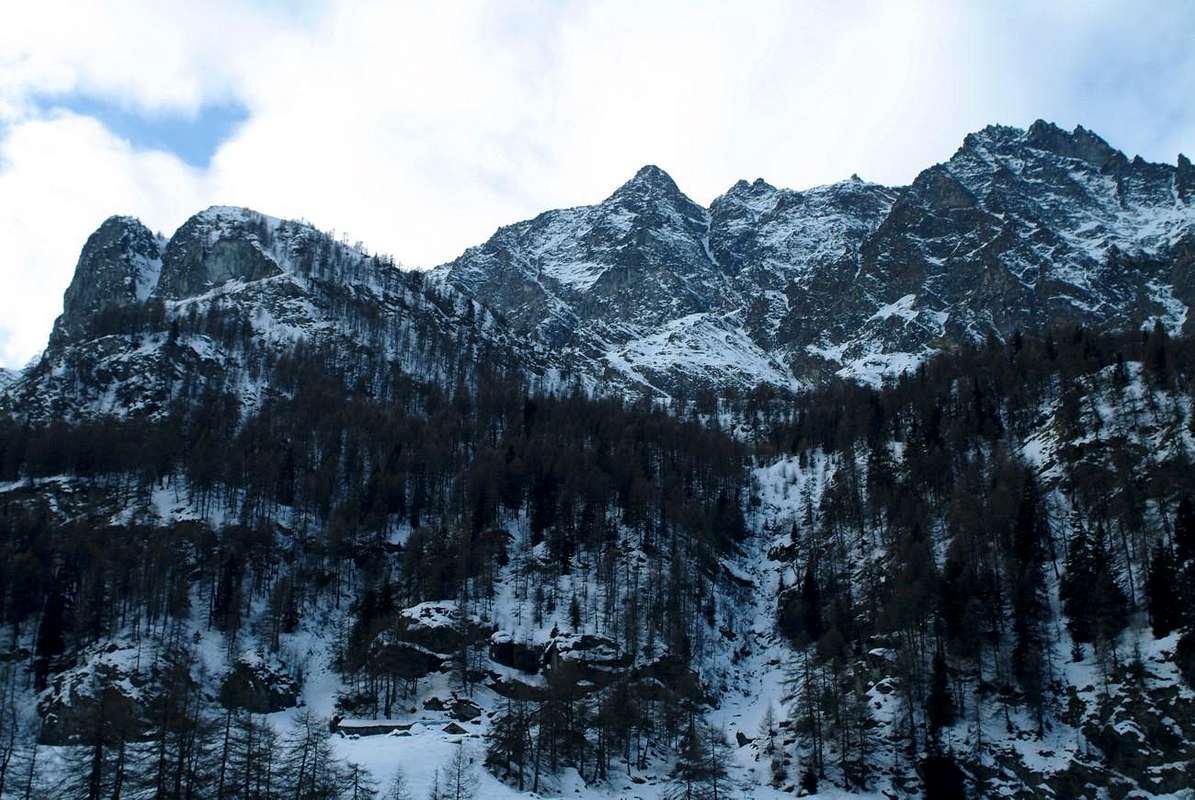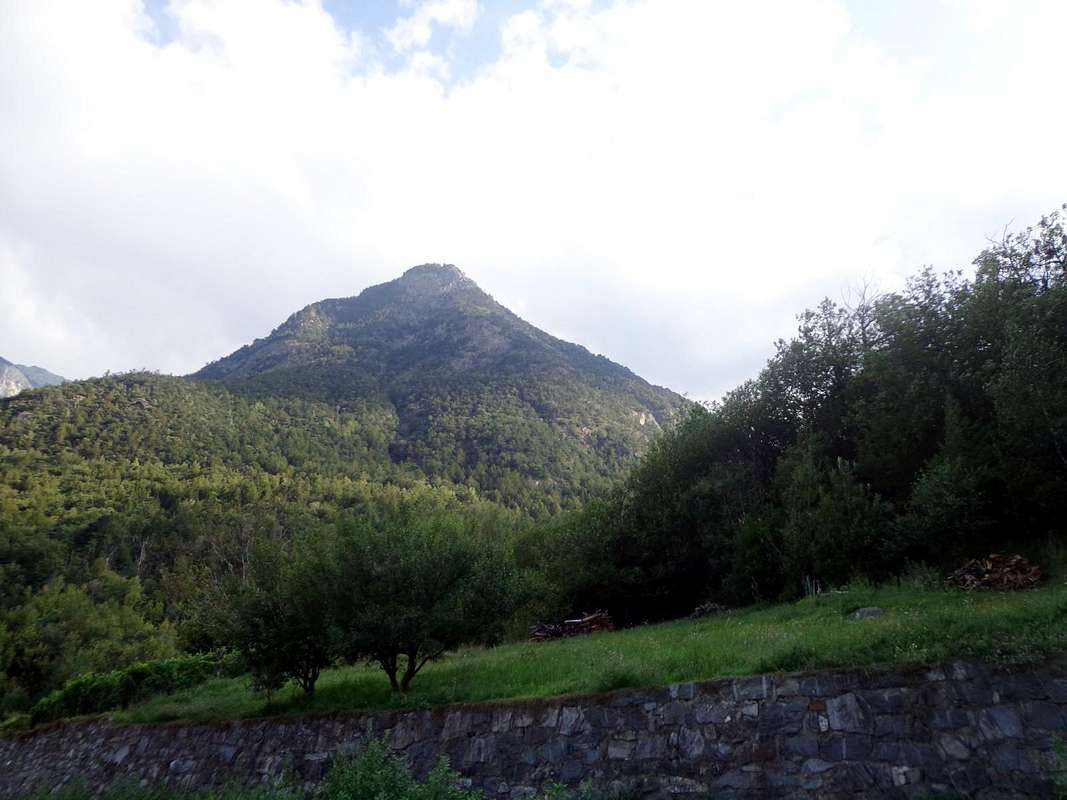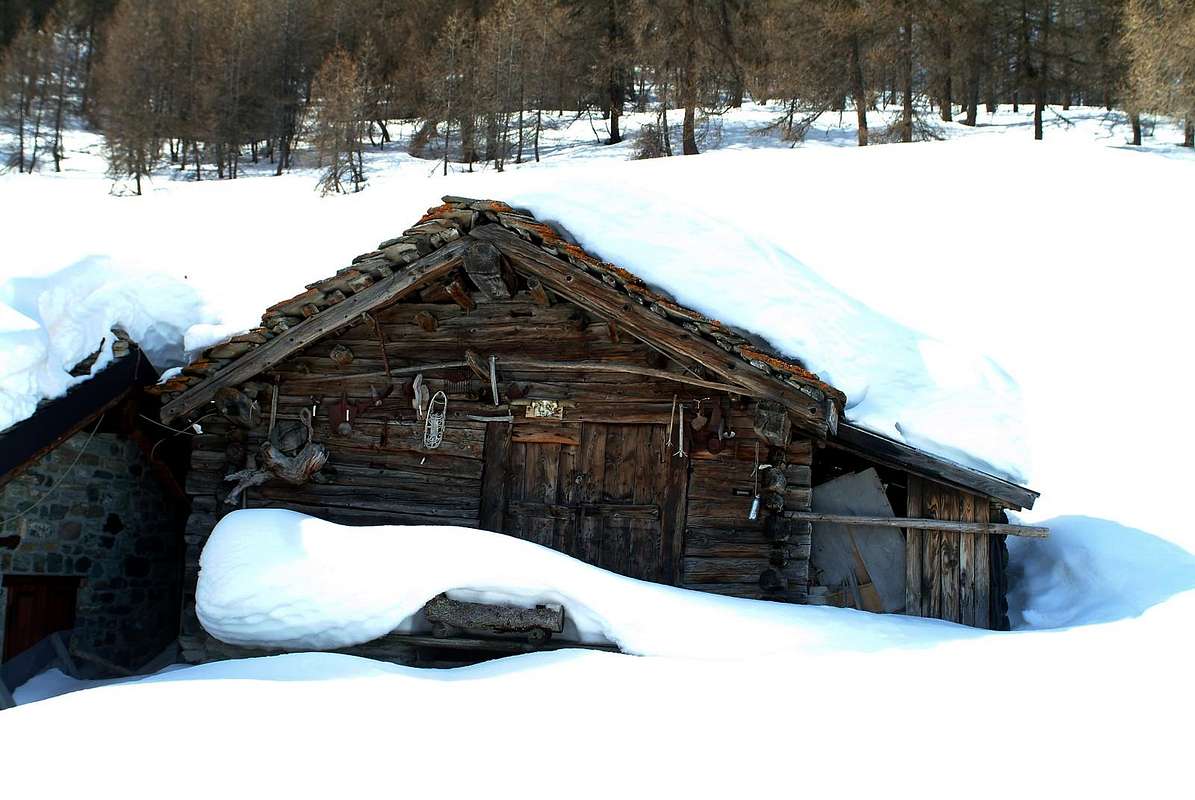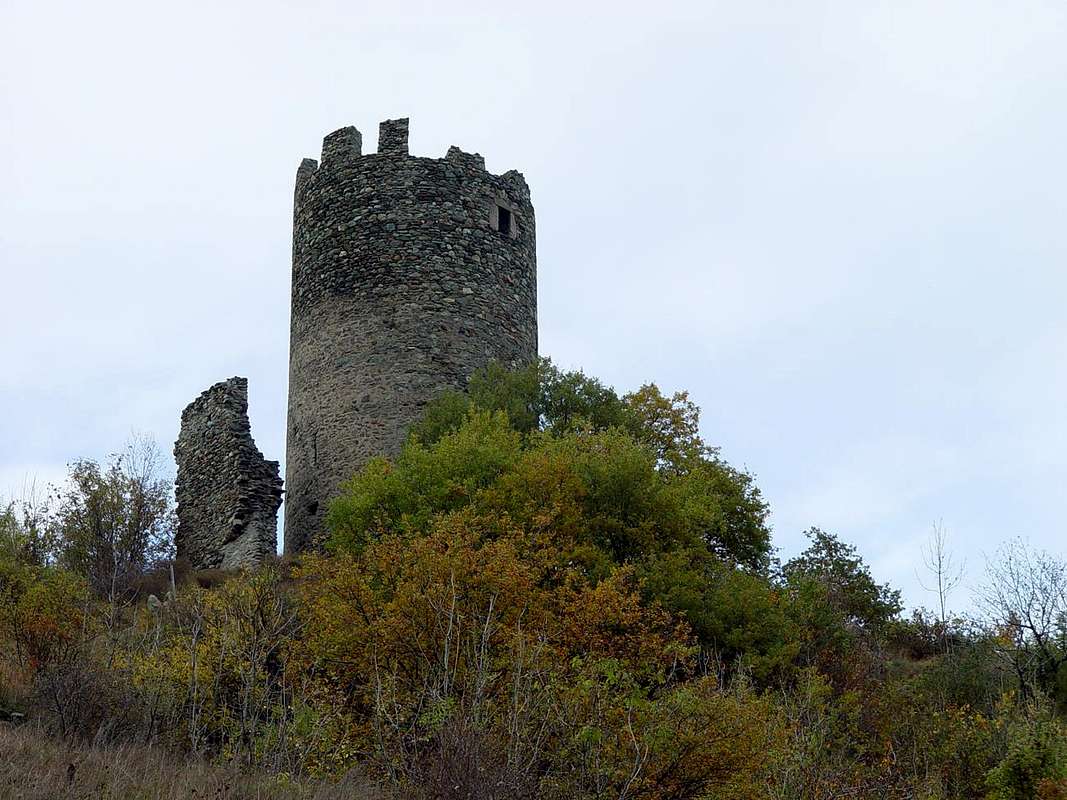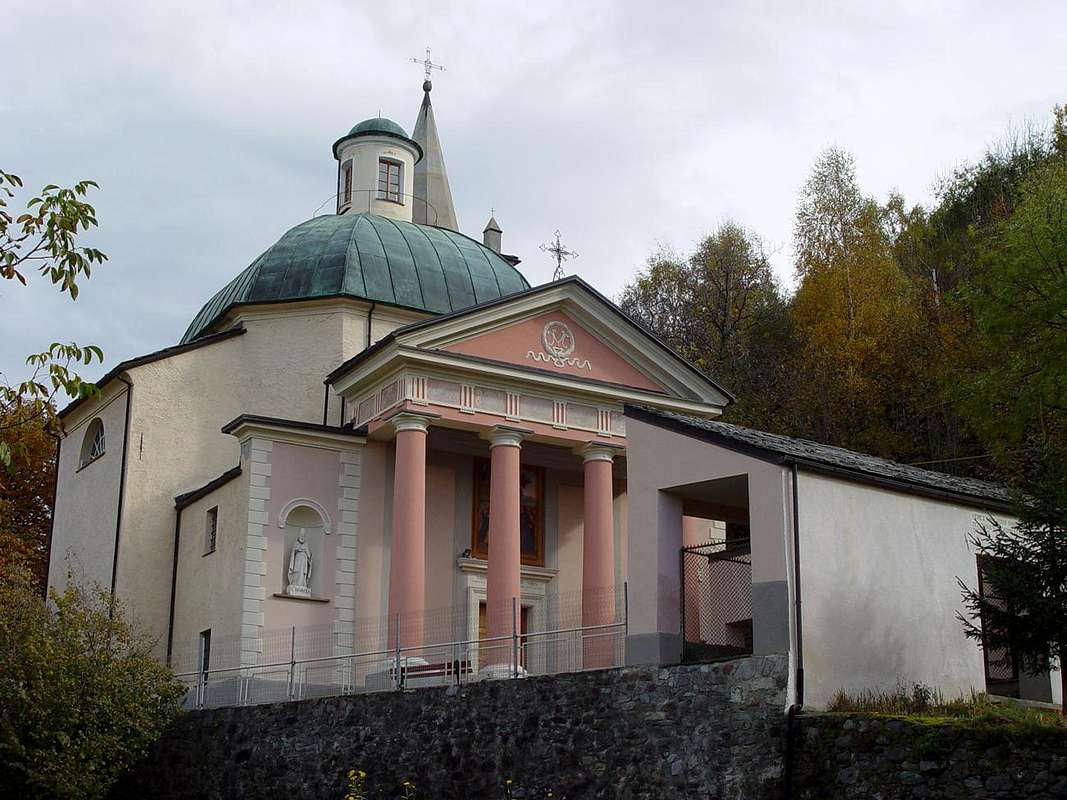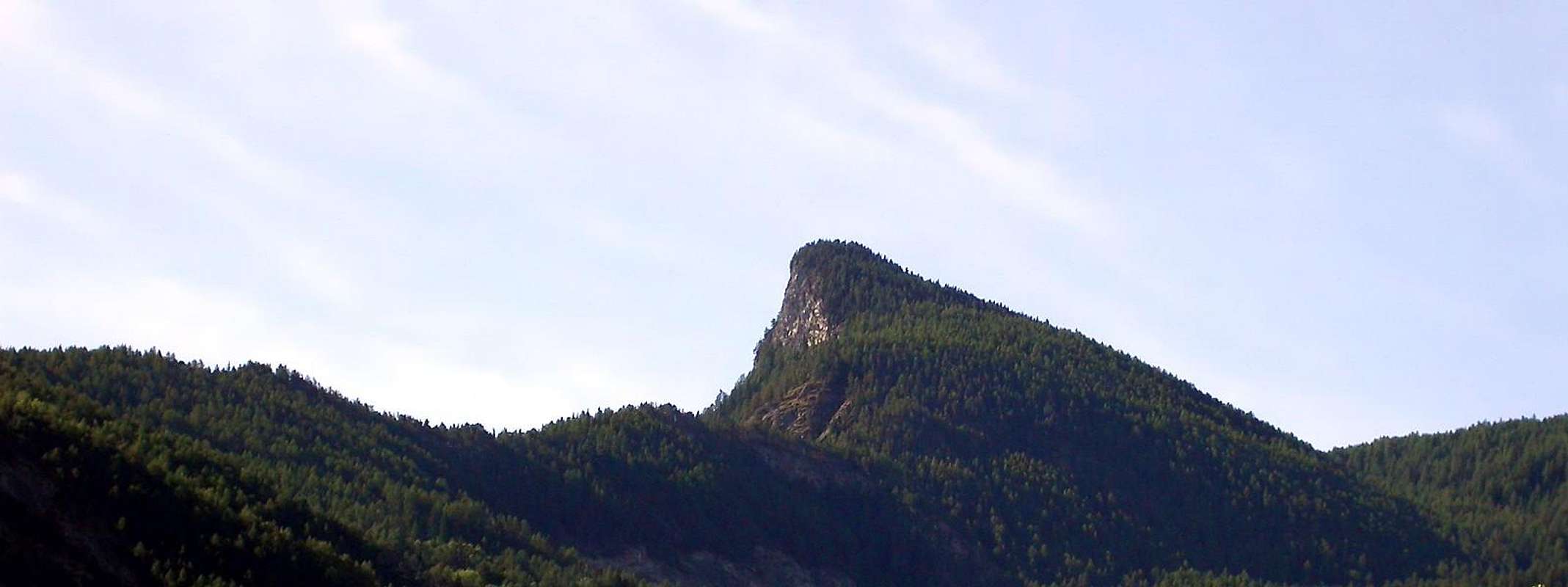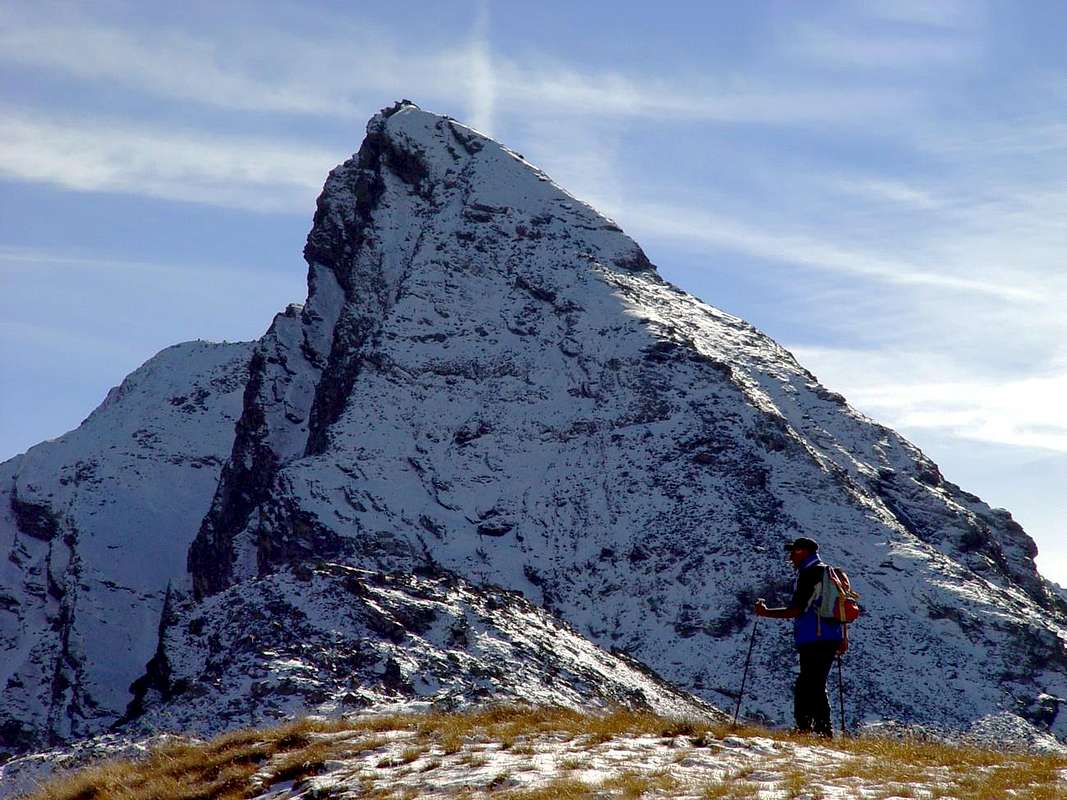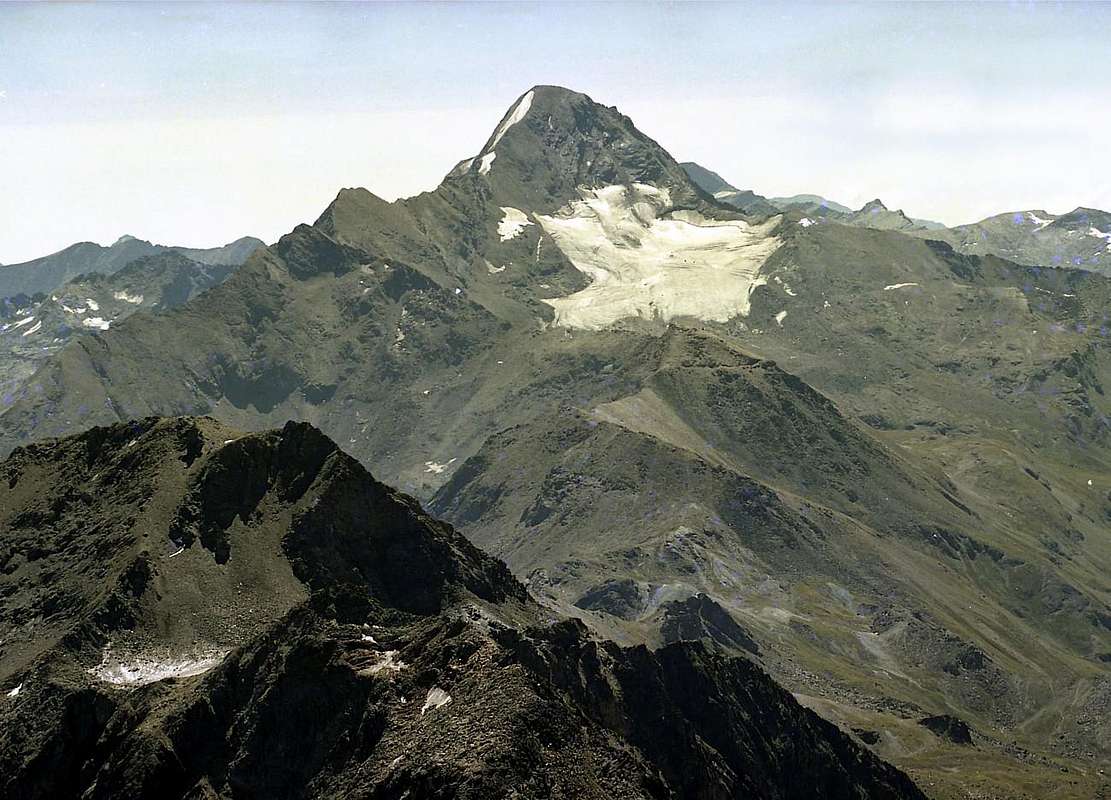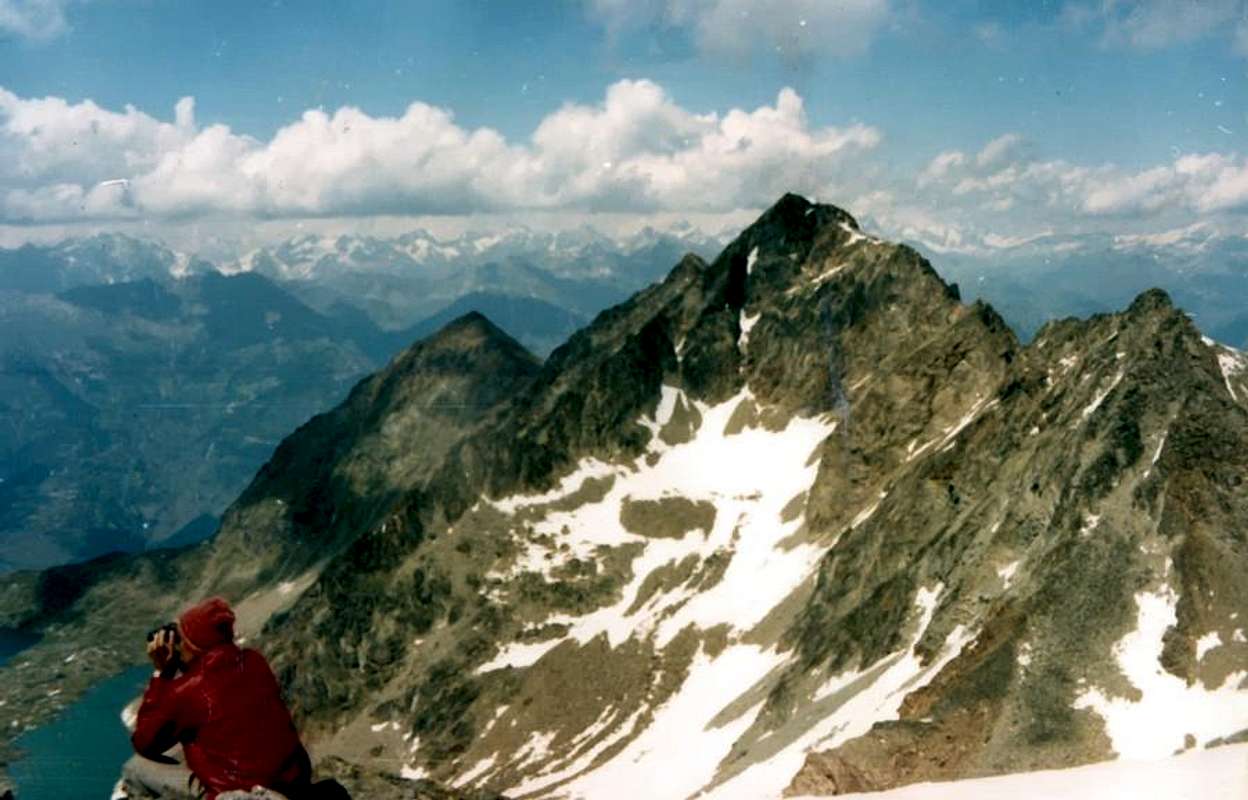-
 2537 Hits
2537 Hits
-
 77.48% Score
77.48% Score
-
 8 Votes
8 Votes
|
|
Route |
|---|---|
|
|
45.73044°N / 7.44846°E |
|
|
Hiking, Mountaineering, Trad Climbing |
|
|
Spring, Summer, Fall, Winter |
|
|
A long day |
|
|
II |
|
|
Note
|
La montagna chiama i suoi figli, ed essi rispondono fedelmente al suo appello… Osvaldo Cardellina, Diario alpinistico, 1964-65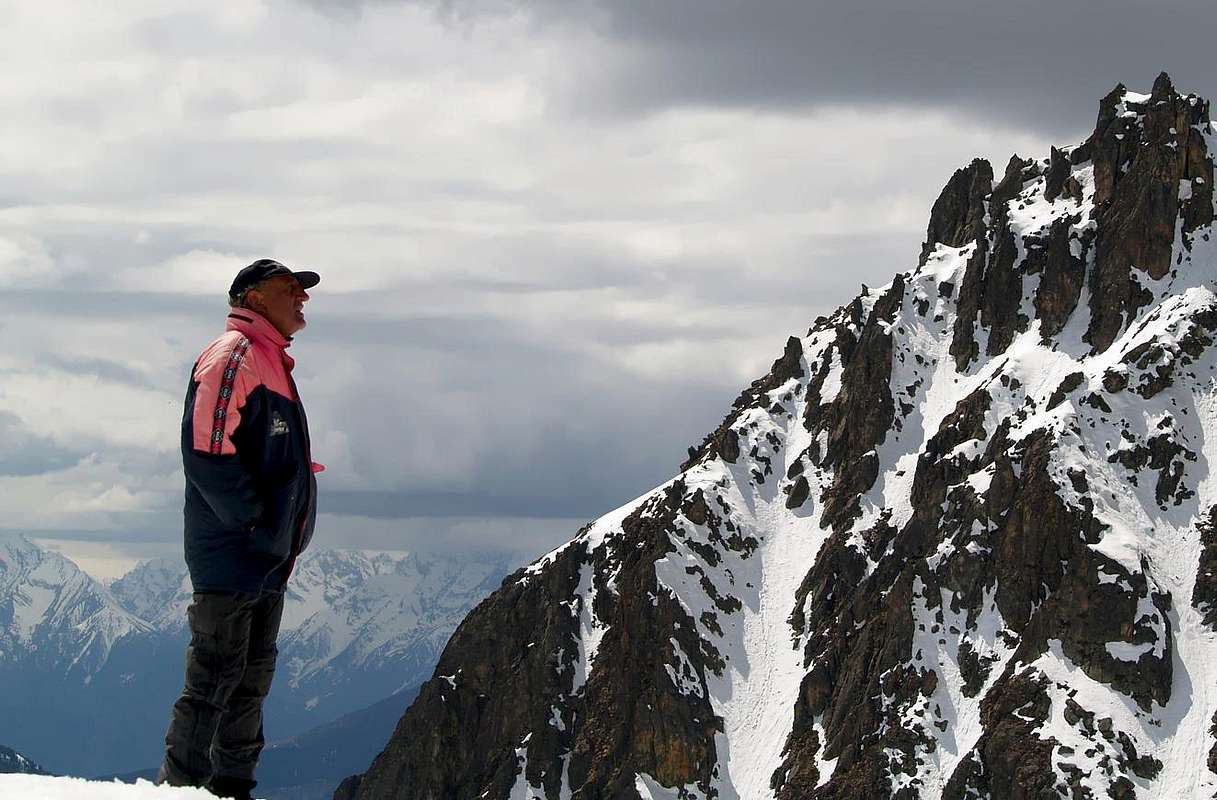 Page texts: @ OsvaldoCardellina "Osva", passed away on May 2, 2022. Page owners: Christian Cardellina e Osvaldo Cardellina. Any updates from September 12, 2022: Antonio Giani, page administrator, friend and climbing companion. Testi della pagina: @ OsvaldoCardellina "Osva", scomparso il 2 maggio 2022. Proprietari pagina: Christian Cardellina e Osvaldo Cardellina. Eventuali aggiornamenti dal 12 settembre 2022: Antonio Giani, amministratore della pagina, amico e compagno di salite. |
Overview
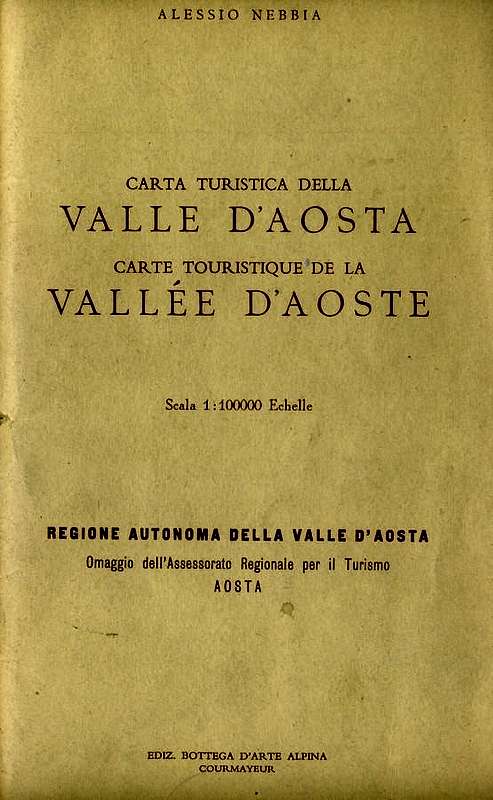
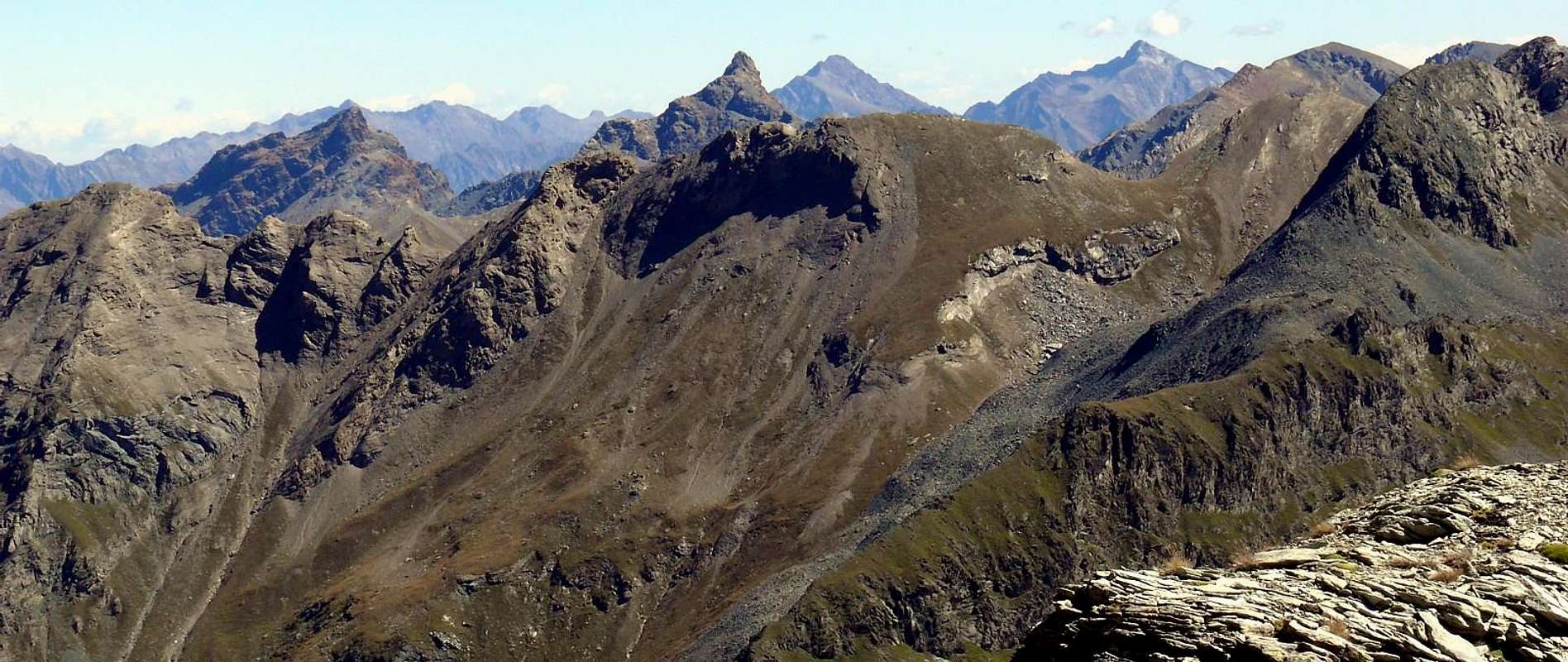
Certainly even this is not a valley which presents great opportunities for extreme climbing and even, Grande Roise or Rouèse aside, reaching average heights very high. All, or nearly so, the tours have bid more directed to Hikers than to the Mountaineers. Also the quality of the rock is never good and, being very old mountains and somewhat transformed from weather very often encountered, as well as very broken rocks, slopes exposed to the risk of small landslides. A pitch easy, but also delicate and requires some experience and also attention; very often in fact are found traits grassy-detrital over rocks and requiring prudence and ability to know the way or simply identify the single "mauvais pas". This is certainly not, as incidentally the nearby Valleys or small Valleys of Champdepraz, Ponton, Fénis-Clavalité-High Comba Tersiva, Laures, Arpisson, Arbole and the entire Champorcher Valley, the valley of the "kingdom of granite" or even solid rock. These mountains, beautiful to see and to photograph, resemble very nice and old Lord that more and more approaches highlight their difficulties in comparison with the passage of time; almost better enjoy them from a certain distance, if not by far! Even this valley-vallon owns many, perhaps even most: beautiful and slender give an idea of wanting to compete with the most famous Summits and Aiguilles; but then, approaching them, they come out all the possible flaws that go even beyond the imagination. Ancient valley with "daughters" old, that time mercilessly has certainly spared. Fall so the trappings and the imagination desires, while remaining only large moraines but now completely devoid of lakes (Lake Layet remains just before coming to the House Hunting Grande Chaux by Turati) to testify to the glory of a time long since passed. As well as to the glaciers, except the minuscule Glaciers of Punta del Tessonet and Little Roise at the Northern foot of the same Summits, now completely disappeared or fully in effect permafrost. However, has a multitude of places where you can launch a beautiful
challenge even "Her Majesty The Grande Roise also Roizà", not free, she too, as many wrinkles that furrow the skin ...

Anche il Vallone oppure Valle di Saint Marcel é alquanto piccola nella grandezza dell'intero arco alpino, ma abbastanza grande rispetto alla minuscola Valle di Aosta. Anche in questo parallelo lavoro s'é voluto appositamente disgiungere questo lavoro, più rivolto agli itinerari, da quello testé effettuato in My Areas con "Four vallons to make a valley: "St. Marcel small Valley with Hunting Reserve Turati", onde non appesantire il primo e dando invece maggior spazio al secondo nel quale si propongono dieci escursioni adatte a fare conoscere nella sua completezza questa lunga valle di oltre 10 Kilometri, dal Comune di Saint Marcel in località Les Druges Alte insino ai Colli Crotey, Lavòdilèc, Tessonet, St. Marcel o Coronas, Vallonet, Leppe e di Salé o della Grande Roise. Anzi si é data più importanza agli Avvicinamenti che non alle Vie, qui descritte in modo più che sintetico quasi stringato, rimanendo le medesime, a nostro avviso, una semplice indicazione di massima, ferma la possibilità di effettuare altre scelte personali e magari completamente diverse o diversificate. Per quanto concerne i primi, invece, s'é data una stesura completa ed esauriente con il fine di potere agevolmente "introdursi" in questa valle o di effettuare una escursione dove conviene "appoggiarsi", anche se marginalmente, a quella adiacente di Fénis-Clavalité con la quale, oltre ad essere confinante, risulta intimamente connessa. Questo in considerazione particolare per l'escursioni al Mont Saint Julien con il suo rinomato Santuario, territorialmente appartenenti al Comune di Fénis, al Mont Touriasse o La Torrasse nonché al Mont Corquet, anche se la via qui descritta si svolge completamente in questa vallata, passando dalla ramificazione di sinistra (Sudest) di questa valle. Nulla vieta d'effettuare l'escursione al Mont Corquet sull'opposto tramite la considerata "Via Tradizionale", approfittando anche di una strada asfaltata di collegamento che da Fènis, tramite il Valloncello del Pieiller, si collega a quella che, arrivando dal Comune St. Marcel, si dirige verso i piccoli Villaggi di les Druges Basse ed Alte, ove la valle va sdoppiandosi ed invia un ramo secondario a Sudest verso le soprastanti Alpi di Fontanafredda, Bren, Prapremier e Corquet nonché in direzione del Mont Corquet medesimo, mentre il principale, dopo aver doppiato il Mont Roux con le sue Miniere di rame di Chuc-Servette, sale più ad Occidente verso il Vallone vero e proprio di Saint Marcel con la Riserva di Caccia del Grand Avert, attualmente di proprietà del Marchese Attilio Turati e già ex Riserva di Caccia del Barone Beck Peckoz della Valle di Gressoney.

Neppure questa valle presenta grandi possibilità d'arrampicate estreme e neppur, Grande Roise o Rouèse a parte, di raggiunger mediamente altezze elevate. Tutte, o quasi, le escursioni presentano un'offerta più rivolta agli Escursionisti che non agli Alpinisti. Inoltre la qualità della roccia non é mai buona ed, essendo montagne molto antiche ed alquanto trasformate dagli agenti atmosferici molto spesso s'incontrano, oltre che rocce molto rotte, pendii esposti al rischio di piccole frane. Un terreno di gioco facile, ma anche delicato e richiedente una certa esperienza ed attenzione; molto spesso infatti si riscontrano tratti erboso-detritici sopra le rocce e tali da richieder prudenza e capacità di sapere individuare la via o semplicemente il singolo "mauvais pas". Non é certamente questa, come daltronde le vicine Valli o Valloni di Champdepraz, Ponton, Fénis-Clavalité-Alta Comba Tersiva, Laures, Arpisson ed Arbole nonché l'intera Valle di Champorcher, la valle del "regno del granito" od anche della roccia compatta. Queste montagne, belle da vedersi e da fotografare, somiglian molto a delle belle ed anziane Signore che più l'avvicini e più evidenziano lor difficoltà nel confronto col tempo che passa; quasi meglio l'ammirar loro da una certa distanza, se non da lontano! Anche questa valle ne possiede molte, anzi forse quasi tutte: belle e slanciate dan l'idea di volere competere con Sommità e Guglie più famose; ma poi, avvicinandole, escon tutti i difetti possibili, sin oltre l'immaginazione. Valle antica con "figlie" vecchie, che il tempo impietosamente non ha di certo risparmiato. Scemano fantasie e desideri dell'immaginazione, mentre rimangono soltanto grandi morene ma ormai completamente prive di laghi (rimane solo il Lago Layet prima di arrivare alla Casa di Caccia di Grande Chaux) a testimoniare d'una gloria di tempi da lungo tempo trascorsi ed irrecuperabili. Anche i ghiacciai son quasi del tutto scomparsi lasciando ormai miseri resti in effetto permafrost ai piedi della Punta del Tessonet ed alla base Nord della Pt. Roise. Però, possiede molteplici località dov'è là possibile lanciar na bella sfida anche a "Sua Maestà la Catena della Grande Roise o Roizà", non priva, pur lei, dalle profonde rughe che le trancian la scorza ...
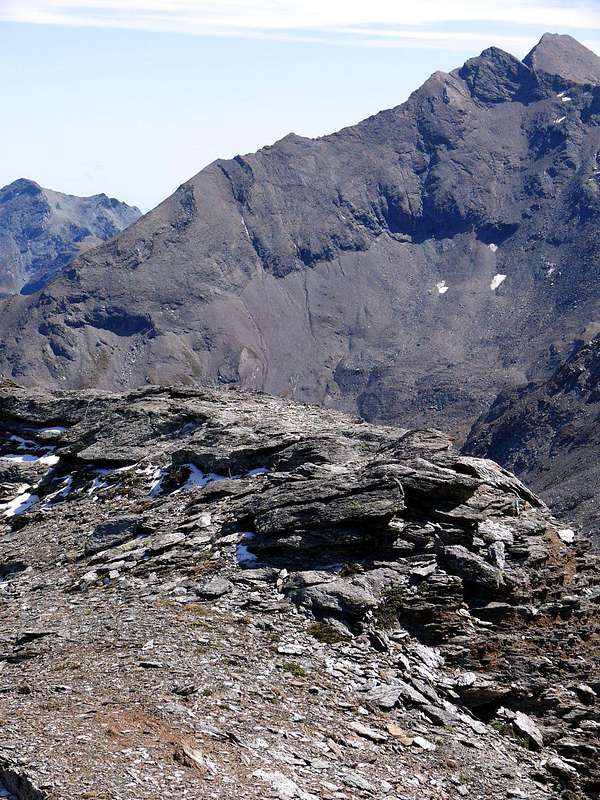
Getting There
- From TORINO, MILANO, etc: Motorway A5. Exit at IVREA or Quincinetto (PIEDMONT)
- From IVREA Town: in West (Southern side) to Pont Saint Martin, Donnas, Bard, Champdepraz, Pontey, Fénis, Saint Marcel.
From Fénis (537m) on Pieiller small Valley towards Le-Pieiller-de-Sermaz, Maison Longue, Le Plany Hamlets (1.075m, 1.112m, 1.174m); through asphalt road) and subsequent connection with La Morgetta(z), Pressunettaz, alternative before Champremier (1.383m) at Les Druges Lower and Upper small Villages (1.567m, 1.600m). -
From Saint Marcel (630m) to Saint Marcel small Valley and Turati Reserve up to the Mulac & Grande Chaux Hunting Houses and Alp (1.937m, 2.370m). By SS.26, 15 Km by Aosta Town, crossing the stonebridge over the Dora Baltea, just after the Country of Nus (output Motorways A5), arriving at the junction 539 meters, and immediately after the field of Football, leave the roundabout to the left on the same (various large signals), and go up to the Chief Lieu.
- From FRANCE: through the Mont Blanc Tunnel to Entrèves-crossroads to Vény/Ferret Valleys - Mountain Guides of Courmayeur - La Saxe Rock Gym - Courmayeur. By Little Saint Bernard Pass, closed since November until half May to La Thuile Valley - Pré Saint Didier - Courmayeur.It is not necessary to take Motorway A5: you can drive on SS.26, in the direction of AOSTA - IVREA - TURIN.
With departure from Fénis:
by the Municipality follow the rectangular signs (brown with indication Barche; 607m) to the Barche Fraction at the entrance on Val Fénis/Clavalité/High Comba Tersiva. The ban is to continue Lovignana small Village (1.169m) along the entire Clavalité long Valley to Pasture Grande-Alpe (2.129m), through the local path n° 2, pratically almost concomitant with the private farm dirt road in soil, except for brief shortcut after Celey Dèsott Pasture (1.556m; E/F; 4h'00/4h'30 from Barche upper Fraction; 5h'00/6h'00 Lovignana).
Con partenza da Fénis:
dal Comune seguire i cartelli rettangolari (color marrone con indicazione Barche; 607 m) per la Valle di Fénis/Clavalité/Alta Comba Tersiva. Il divieto di proseguire si trova al Villaggetto di Lovignana (1.169 m); percorrere tutto il Vallone fino all'Alpe Grand'Alpe (2.129 m), tramite il sentiero locale n° 2, praticamente quasi completamente concomitante con la strada poderale privata in terra, tranne qualche breve scorciatoia subito appresso Celey Dèsott (1.556m E/F; 4h'00/4h'30 dalla Frazione di Barche; 5h'00/6h'00 dal divieto).
Various Remarks
The carriage, which then continues over and again crosses the Bioley Torrent in altitude of 1.230/40 meters about reaching the other side or Western, with a wide hemi circle first and then North-northwest to West-southwest, reach a subsequent junction just beyond the Village Champremier (1.383m), connecting to the Main Road leading up to Saint Marcel Municipality towards wide Les Druges Conch or Higher Basin in average of 1.550/600 meters around, below the Mont Roux (2.277m) with its Coppermines, thus combining the "viability" in the upper area between these two communes. Please note that the path is formed by a narrow road with many windings, for which reason it is good thing to pay caution. This Road Connection also allows power to vary the same trip, and after the climb in Southeast towards Mont Saint Julien (1.384m), such as going to Area Pic Nic (1.570/80 meters about) of Les Druges Alte (1.575 meters about; Higher), placed in the middle of a beautiful and dense forest, with the Various Opportunities:
a) - : Stay with the same modest sum payment (large parking in compress earth, various fountains near the "islets" with benches and tables in wood, stone barbecue, toilets);
b) - : visit the Sites of the Coppermines and Iron by Chuc-Servette (from the nearby location of Furnace, now in ruins, the tops of which are accessed through marked trails and a General Map departure (Various mines entrances, Houses and the remains of the Miners of large Ropeways wood for the transport of Ore to the valley floor);
c) - : from Les Druges Alte (High or Upper) (1.567m) ascending with the route n° 14 starting at the fountain with adjoining gorgeous little wooden and squared "Rascard" and lift the nearby Chapel of Saint Bernard, from this, depending on your choice , you can continue up to the summer Pastures of Fontanafredda or Fontanafreida (around 1.800 meters), Bren (1.961m; fountain) and finally the last of Prapremier or Praz-Premier (2.010m; semi ruined and abandoned), right on the border with Fénis Municipality.
Regarding the descent, in case of extension of the excursion to the Area of Druges, it is convenient from the junction of the road on the right Champremier abandon climbed and get off at Saint Marcel through the Regional Road, in such a way passing from the "Locanda del Diavolo or Inn of the Devil", Viplana, Ronc, Sazailland and Seissogne small Hamlets (1.066m; beautiful wooden mill) you will reach the Village Plout with its very famous Sanctuary of 1640, but existing as a niche, since 1200, dedicated to "Notre Dame des Hermites" (968m; beautiful "Via Crucis" outside on the arcade, which depicts the "Fifteen Mysteries of the Rosary" by a Painter of Asti in 1854). From Plout also Plou continue to Réan, Mezéin (793m, 300m before, turn right for Fénis, but with ban), Jayer, Moulin small Hamlets towards St. Marcel (Ancient Castle in Paquier Fraction; 609m), and finally, passing under the Motorway and crossing the bridge over the Baltea near the ancient Foundry Copper (547m) you get to Highway n° 26.
Combining it with the ascent of M. Saint Julien with St. Grat Shrine and Hermitage from Fénis through Pieiller small Valley, is Fantastic Hiking Tour, scenic, cultural and instructive.
Annotazioni Varie
La carrozzabile, che continua oltre attraversando nuovamente il Torrent de Bioley portandosi sull'altra sponda od Occidentale, con un largo giro dapprima a Nord-nordovest e quindi ad Ovest-sudovest, raggiunge un bivio appena oltre il Villaggio di Champremier (1.383 m), collegandosi alla Strada Comunale risalente da St. Marcel verso la Conca delle Druges unendo così la "viabilità" nella zona alta tra i due comuni. Da segnalare che il percorso é formato da numerosi tornanti a gomito, per cui é cosa buona prestar attenzione. Questa Strada di Collegamento permette di poter variar la gita medesima e, dopo la salita al St. Julien (1.384m), ad esempio salire All'Area Pic Nic di Les Druges (1.570/80 metri circa), collocata all'interno d'una fitta splendida foresta appena prima di dirigersi all'ingresso del Vallone di St. Marcel, con Varie Possibilità:
a) - : sostare alla medesima con modica cifra di pagamento (buon parcheggio, fontana, numerose "isole" con panche e tavoli in legno, barbecue in pietra, servizi igienici);
b) - : visitare i Siti delle Miniere di Rame e Ferro di Chuc-Servette con partenza dalla vicina Località di Fornace, ormai in rovina, alle parti superiori alle quali s'accede tramite sentieri segnalati ed una Mappa Generale alla partenza; sussistono ancora i vari imbocchi, Case dei Minatori e resti delle grandi Teleferiche in legno per il trasporto del Minerale;
c) - : da Les Druges Alte (1.567 m) salire con il sentiero n° 14 partendo alla fontana con attiguo splendido e piccolo squadrato "Rascard" in legno e risalita alla vicina Cappelletta di San Bernardo; da questa, a secondo della vostra scelta, potete continuare fino a Fontanafredda o, in loco, Fontanafreida (1.800 metri circa), Bren (1.961 m) ed infine all'ultimo di Prapremier o Praz-Premier (2.010 m), proprio appena oltre il confine con Fénis. Sin qui giunge anche una parallela e sottostante ad Est strada poderale.
Per quanto concerne la discesa, in caso di prolungamento della gita insino l'Area delle Druges, conviene dal bivio di Champremier abbandonare sulla destra la strada percorsa in salita e discendere in Saint Marcel con la Strada Regionale; in siffatta maniera passando dalla "Locanda del Diavolo", Viplana, Ronc, Sazailland e Seissogne (1.066m; bel mulino in legno) si raggiunge il Villaggio di Plout con il suo famosissimo Santuario del 1640, ma esistente, come nicchia, già dal 1200, dedicato a "Notre Dame des Hermites" (968 m; splendida "Via Crucis" all'esterno nel porticato, che raffigura i "Quindici Misteri del Rosario" ad opera di Pittore Astigiano nel 1854). Da Plout o Plou continuare per Réan, Mezéin (793 m; 300 metri prima, bivio a destra per Fénis, ma con divieto di transito ai mezzi non autorizzati), Jayer, Moulin e Saint Marcel (Antico Castello a Paquier; 609 m); infine, passando sotto all'Autostrada ed attraversando il ponte sulla Dora nei pressi dell'antica Fonderia del Rame (547 m), s'arriva alla Statale n° 26.
Abbinandola alla salita dal Villaggio di Coteau del Mont Saint Julien (con presso la Cima, il Santuario di San Grato ed il sottostante rifugio scavato nella roccia dell'eremita San Giuliano) da Fénis pel Valloncello del Pieiller, risulta Fantastica Gita Escursionistica, paesaggistica, istruttiva nonché culturale, molto adatta a ragazzi ed anche per i bambini.
Description of the 10 most interesting Routes
1) - Mont Saint Julien (1.384m), through Western Slope: it starts with the path n° 10B (wooden signpost for St. Julien) at the hairpin-junction between the villages of La Morgettaz and Le Pieiller (1.230m) after a short distance on a dirt track and soon you get to the source village "Phantom" by Le Coteau (1.234m), in the woods. Here is another similar sign, hanging from the old alp, half in ruins and in front, pointing towards the South direction, a small ramp leading to the little votive Chapel/Oratory of St. Joseph, just behind the old village, now abandoned (one renovated house) and looking ghostly, where in times not so long ago there was "Life". He turns to the East and with gentle climb you pass a brook with a flat stone, which acts as a miniscule bridge, leaving below a pasture with grass at the edge of the woods that is about to go broke, you continue progressing toward Northeast until meet the plates of polished rock and blackish (aimed at a small climbing didactics; in the area are succulents). The trail begins to rise before addressing slope towards a grassy collar, scrapping on the left, (Collar of Saint Julien? Impassable because beyond presents a vertical rock face) and then decisively in the direction of North to a long wooden boardwalk that a good fence protects against a quantum leap rock, above the Pieiller Walloon. The next stretch leading to the wooden walkway that "cuts" the West Slope with a diagonal to the North, and very exposed an impressive leap rock, but protected by a fence that is hanging in the balance at the end because, due to the winter snow, it is off exit from its base. You have to pay a little attention, especially in the presence of childrens. After crossing the same, the trail climbs to the North-northeast, and with a beautiful stone staircase, pleasant to go, achieving a rampart with beautiful views of the Central Valley, the Dora Baltea and the Aosta Town; while the West stands the Range Roèses (to photograph must come in the morning), preceded by the South Coast more than Mont Saint Julien salt to the nearby Torrasse (1.854m), Mont Corquet (2.527m) to eventually decline with semi-circular route to Mont Roux (2.277m), the site of ancient Ironmines and Copper. Turning to the right with a nice diagonal through the woods, on the trail soft, slightly steep and studded safe from dawn of mushrooms, you get to the Saint Grat Sanctuary with octagonal Church its high, white and square (T/E; 0h '35/0h '40). The true Summit is just above and you can reach in a short time with a trace of grass and trees just to the right (West).
2) - La Torrasse or Mont La Tourriasse (1.903m) from Les Druges Alte, through the dirt road concomitant with the path n° 14 towards Fontanafredda isolated Alpage (1.829m); from Fontaine Froide three possibilities:
3) - Mont Corquet (2.530m), by Crotey Hill: through the route n° 3 from Les Druges Higher (1.575 meters about) up to the Chuc-servette Coppermines (1.733m abandoned) at the entrance on St. Marcel Valley and at the Western foot of Mont Roux; leaving the same right, continue South through the path n° 18 towards the fork 2.151 meters, just before Lavanché Pasture (2.071m). From the crossroads continue East through the path n° 3E into a small secondary vallon reaching the nearby Crotey Dèsott and Damon Alps (2.348m, 2.358) just below the homonym Hill (2.458m). From this in North before by an evident track n° 8A, that arrives in East from the Tramouail de la Rossa (Fénis-Clavalité Valley), and after, through flat prairies, that more easily towards the cairn of Mont Corquet (E/F; 0h'45 by Crotey Hill; 1h'30/1h'45 from Lavanche Pasture).
4) - Punta Plan Rué or Tita de la Rossa (2.881m), through Belfrond Hill. From crossroads 1.773 meters, on St. Marcel Walloon and before Eteley Pasture (1.741m), reach in South the Mulàc-St. Louis Turati Hunting House (1.937m) with the same path n° 3/4; continue, briefly with same direction, after decisively changing East and crossing the Saint Marcel Torrent, towards Sinsein and Plan Rué Pastures (1.955m, 2.100m). From this, leaving South the path towards Emonin, Layet Petite and Grande Chaux Alpages, climb on steep rocky-grassy slopes into a narrow chanel (great edelweiss) towards Belfrond Hill (2.598m Hunters Pass). By the North-northwest Crest or on the next Slope Northwest with fine debris and rotten rocks enough easily, but with caution, to the very narrow Summit (EE/A/F+; 1h'15 by Belfrond Pass; 3h'15/3h'30 from Le Druges).
5) - Petit Avert/Grand Avert Crossing (2.946m, 2.991m), through Lavòdilèc Hill: from Grande Chaux Hunting House (2.355m) with the path 7/102/Alta Via n° 1, or more directly from Petite Chaux Alp (2.420m) by almost the same trail (more in East) towards Lavòdilèc overhanging Hill (2.863m); continue North through a small track on Southwestern Slope to Pt. Avert (2.946m; EE/F+; 0h35 from hill; 3h'00/3h'30 Grand-Alp). Continue with easy descent in Northeast on Northeast Crest reaching Terre Bleue Pass (2.830m); from this and by Southwest Crest with an exposed step into the short but exposed dihedral (I°+/II°-) to Grand Avert (2.991m; EE/A/F+; 1h'15 by Petit).
Downhill: should go down via enough easy Northern Ridge to the next Grand Avert Pass (2.832m) and from this to the West without trail but steep moraine until you find the trail 7/102/Alta Via n° 1 and with this to Petite or Grande Chaux (EE/A/F+; 1h'45/2h'15 from Grande or Petite Chaux; 5h'00/5h'30 Le Druges). Logically, you can also reverse path going up directly from Petite Chaux to the Grand Avert Pass and subsequent traverse towards Grand Avert, Terre Bleue Hill, Petite Avert and Lavòdilèc Hill.
6) - Punta del Tessonet (3.264m) by Tessonet Collar. From Grande Chaux in South before with the path 4/102 up to the fork 2.602 meters towards St. Marcel or Coronas Hill (2.916m) After, abandoning Southwest the same, along the various sources of St. Marcel Torrent and through the moraines to the remains of ancient Punta del Tessonet Glacier, already almost extint; through a short terminal and more steep ramp, amongst rotten blocks and debris, to the Tessonet Collar (3.066m). By the easy, but rotten and exposed in South, Western Ridge before avoiding to the left an small spire (North; I°+) after bypassing right (South; I°+/II°-) a short step on a rocky plaque to Summit.
In descent: same route to small pass or collar, paying attention to debris that covers the rocks. The same lead in South towards Grauson, branch of Tessonet, small Valley in the adjacent Val de Cogne (EE/A/F+; 0h'45/1h'00 by Tessonet Collar; 2h'45/3h'00 from Grande Chaux Hunting House; 5h'45/6h'15 from Le Druges Alte tiny Village).
7) - Traverse by Coronas Hill towards Laval Summits and Punta Gianni Vert (2.916m, 3.091m, 3.102m, 3.148m). From Grande Chaux through the trail 4/102 in South-southwest towards Saint Marcel also called Coronas Hill (2.916m), reached by a long diagonal on debris. From the Pass, with crossing in edge of the rige to South-southeast, bypassing the two Laval Summit to Gianni Vert Top (E/F; 1h'00/1h'15 from hill; 1h'30/1h'45 by Grande Chaux; 4h'30-'45/5h'00-'15 Le Druges or nearby Picnic Area).
Downhill: or along the same, with round trip; is possible even by the easy short Southeast Crest to Collar, through rotten, broken rocks and blocks (EE/F+/ 0h'25 by Top).
8) - By Mont Vallonet towards Punta di Leppe and Hill traverse (3.305m). From Grande Chaux in South-southwest always with the path 4/102 into the Walloon Fenêtre towards Saint Marcel also called Coronas Hill (2.916m); or more in West through steep moraines with a small not numbered path to Vallonet Pass (3.062m). From both the passes with crossing in edge of the rige to the North-northwest towards Punta di Leppe, by the easy South-southeast Crest, reaching the triple Summit (Western 3.305m, Central 3.300 meters about, Eastern 3.292/3 meters about), with short crossing from one to another (E/F; 2h'45/3h'15 by Grande Chaux; 5h'30/6h'00 Le Druges Alte).
Downhill: through the more steep but always easy Northeast Crest to Leppe Hill (3.108/10m) and from this return to Grande Chaux (E/F+; 2h'00/2h'30 from the Summit).
9) - Punta Ilario Antonio Garzotto (3.273/4m), through Leppe Hill (3.108/10m): from Grande Chaux Hunting House, in ascent by the preceding route, through the Little Vallon in West-northwest to pass; from this by South-southwestern Slope to Summit (EE/A/F+; 2h'45/3h'15 from Grande Chaux; 5h'30/6h'00 by Le Druges Alte).
Note: from Punta Garzotto is possible to continue the journey Northward reaching the Gr. Roise and reconnecting with the next itinerary. Down from the same first toward a large saddle almost horizontal (3.190m; short passages of III°/III°+ on the edge of the ridge); from this, past two small and insignificant elevations, climb a steeper section reaching the round Unnamed Quote (3.249m). Once you reach the next notch (3.245m) is continuous with the easier but exposed Crest South reaching the flat and wide Top (EE/A/PD/PD+; 1h'00/1h'15 by Garzotto; 1h'45/2h'00 Leppe Hill). This via, as the next n° 10) - are to be considered Mountaineering-Climbing and require a certain amount of experience. Or to complete the crossing to the Col, Becca di Salé, with its descent into the Walloon Arpisson, should be considered as a rather long and tiring.
10) - Becca di Salé, Little and Grande Roise traverse (3.137m, 3.279m, 3.357m), by Salé Hill (3.025m). From les Druges Alte towards Choulet (1.821m) Pasture through the paths 3/4/4G and from this with traverse in Northwest towards the Arpisson Eastern Walloon up to Salé and Bonplan Alps (2.159m, 2.374m). From the last entering into a narrow and desolate walloon between the Little Roise North Wall and Becca of Salé East Face, climbing on the very wild Eastern Slope, reach the Salé or Grande Roise Pass (3.025m, ancient Leppy or of Brissogne Pass). From the hill to the North and in short time towards Becca of Salé through the easy Southern Crest (EE/F+/F; 0h'30 from the hill; 3h'00/3h'30 from the fork near Choulet Pasture; 4h'30/5h'30 Le Druges). Or in South to the Petite Roise (3.279m) with subsequent traverse to Punte Gianni Junod also Central Roise (3.300m); from the South Summit to Grande Roise (3.357m), round trip route and descent by the previous via (EE/A/PD-/PD+; 4h'00/4h'30 Gr. Chaux; 7h'00/7h'30 Le Druges). It is also possible to make the crossing (more difficult) in the opposite direction coming from Punta Garzotto and via the South Crest (see above).
Downhill: via the same route, or going down to the not difficult but very exposed Ridge South until the notch 3.245 meters; from this, after a descent westward in a channel with rocky soil, there is a small basin with large blocks at the base of the Southern Wall Grande Roise. Navigating towards South, in altitude of about 3050/60 metres and at the base of the Western Wall of Punta Garzotto, you reach the track from Walloon des Laures reaches the Colle di Leppe, from whence this Grande Chaux with the way earlier.
Difficulties & Equipment
DifficultiesHighly variable depending on the Excursion and as directed by T/E (Tourist or Hiking) to EE/A (Expert Hikers/Climbers) with steps, however, never exceed the II°+, except for the complete crossing of Grande Roise Chain that, if full path on edge of the ridge, involves steps of II°/II°+/III°/III°+.
Molto variabili a seconda dell'Escursione e come rivolte da T/E (Turistiche od Escursionistiche) ad EE/A (Escursionisti Esperti/Alpinisti) e con passaggi che, comunque, non superano mai il II°+, tranne che per la traversata delle Rouèses che, se percorso integralmente sul filo di cresta, comporta passaggi di II°/II°+/III°/III°+.
Equipment
For Hiking, preferably with rope against some climbs type Punta Plan Rué, Punta del Tessonet, Punta Ilario Antonio Garzotto and traverse on the whole Grande Roise Chain.
Da Escursionismo, meglio se con corda nei confronti di alcune ascensioni tipo Punta Plan Rué, Punta del Tessonet, Punta Ilario Antonio Garzotto, Punta Tersiva e traversata dell'intera Catena delle Rouèses.
Campings
Remember that free camping is forbidden (except for emergency reasons, over 2.500m, from darkness until dawn).Mountain Condition
- Meteo: you can find all the needed informations at the official site of the Valle d'Aosta Region:
- Valle d'Aosta Meteo
Important Information
- REGIONE AUTONOMA VALLE D'AOSTA the official site.
- FONDAZIONE MONTAGNA SICURA Villa Cameron, località Villard de la Palud n° 1 Courmayeur (AO) Tel: 39 0165 897602 - Fax: 39 0165 897647.
- A.I.NE.VA. (Associazione Interregionale Neve e Valanghe).
Useful numbers
- Protezione Civile Valdostana località Aeroporto n° 7/A Saint Christophe (Ao) Tel. 0165-238222.
- Bollettino Meteo (weather info) Tel. 0165-44113.
- Unità Operativa di Soccorso Sanitario Tel. 118.




